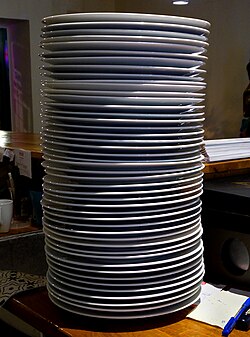Analogy: Stack of Plates
Imagine a stack of plates: you can only add a new plate to the top, and you can only take a plate from the top. The last plate you put on is the first one you take off. Like a stack of plates or books.
Key Operations:
- Push: Adds an element to the top of the stack.
- Pop: Removes and returns the element at the top of the stack.
Use Cases:
- The “undo” feature in a text editor or a word processor is a perfect example of a stack. Every time you type a character or perform an action (like deleting a word), that action is “pushed” onto a stack. When you click “undo,” the most recent action is “popped” off the stack and reversed. If you keep clicking “undo,” you’ll reverse the actions in the exact reverse order of how you performed them—the last action you did is the first one to be undone.
- Another good usecase is Navigating backward in a browser. Every website you visit added to the browser history stack.

